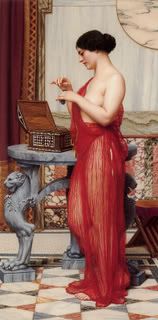
But why is jasmine so prized over other natural or synthetic essences? And why is it a staple of perfumery as contrasted with what the great perfumer Jean Carles termed “accessory notes”? Finally: can it be replicated?
To quote master Edmond Roudnitska in his essay The Art of Perfumery: “It is the natural product par excellence”.
There isn’t a composition that does not benefit from its inclusion as it marries well with all the other essences: it blends with everything and lends a heart-achingly beautiful tinge to everything it touches.
Jasmine as a note and component in fragrance composition
Jasmine is a middle note in perfume composition, meaning it evolves in the heart stages of development on the skin which makes it tenacious enough to anchor top notes and swift them to its own trail, yet fresh enough to not outstay its welcome leaving behind its fragrant remnants subtly. Middle notes impart warmth and fullness to blends and they embody passion. It is no coincidence that they are called “heart notes”. They bridge the distance between deep, somber base notes and sharper, fleeting top notes.
To make this more scientifically correct we revert to Septimus Piesse’s system of olfactory octaves, on which W.A. Poucher elaborated in 1923, giving each note a specific “pitch” on the olfactory scale from 1 to 100. In this system 1-15 are top notes, while 16-69 are middle notes and 70 to 100 are bottom notes. Of course several ingredients share perhaps the same number in the scale. It so happens that jasmine absolute is marked as 43 in this system, along with tuberose and rose.
In evaluating the various unusual combinations between notes, jasmine has a particularly successful effect to the following notes: roman chamomile, coriander, geranium (which has a rosy dry out to it), spearmint, and of course rose and bergamot with latter which it forms the most classic accord of most grand feminine perfumes of history.
Jasmine absolute is rendered through this process nowadays:
“Flowers are placed on racks in a hermetically sealed container. A liquid solvent, usually hexane, is circulated over the flowers to dissolve the essential oils. This produces a solid waxy paste called a “concrete”. The concrete is then repeatedly treated with pure alcohol (ethanol) which dissolves the wax and yields the highly aromatic liquid known as an absolute. This method is also used for extracting resins and balsams and for rendering the animal essences, such as civet, musk ambergris and castoreum”(source: Mandy Aftel, Essence and Alchemy)
Absolutes are more lasting and concentrated than simple essential oils and have a highly intense and fine odour profile. Therefore they are the most expensive perfumery ingredients.
In jasmine the concrete is also very useful, a solid reddish-orange wax, mellow in tone that can be used for adding smoothness and florancy to many blends.
As an aside, for those bent on acquiring some of the best jasmine absolutes and concretes, the following address is recommended:
Coimbatore Flavors and Fragrances
5/82 Palanigoundenpudur
K.Vadamadurai Post
Coimatore 641017
India
You can also contact aqua-oleum which is an aromatherapy site for essential oils, available in small quantities, run by a renowned aromatherapist.
Headiness, Indoles, Living Matter and other stuff on Jasmine
Jasmine’s inclusion in the white floral category of fragrances especially is almost self-evident. Tuberose, ylang-ylang, gardenia (synthetic, because the flower does not yield a satisfactory oil for perfumery) and orange blossom marry with jasmine to produce intensely narcotic and exotic perfumes that capitalize on the sultry image of those blossoms and make our head spin.
The magic of this headiness is indol/indole, referenced also in our Orange Blossom Series, a matter that is also found in human feces and which according to Paul Jellineck “reminiscent of decay and feces, lends orange blossom, jasmine, tuberose, lilac and other blossoms that putrid-sweet, sultry intoxicating nuance that has led to the sum of these flowers and of their extracts as delicate aphrodisiacs, today as in the past”. This is the reason why many people find jasmine animalic and difficult to stomach in large quantities in their perfumes, as they perceive a dirty note to it that repels them. In isolation, indole smells moth-ball-ish, camphor-like rather than poopy.
A notable example is the majestic A la nuit by Serge Lutens for Palais Royal de Shiseido, in which all the aspects of natural jasmine from bud to rot are displayed like the faceted profile of a precious gem. A jasmine for die-hard jasminophiles. The use of many different kinds of jasmine from Egypt, Morocco, and India are all contributing to giving it richness beyond that of a simple soliflore, intensified by clove, honey and benzoin.
It is interesting to note that indole cannot be synthesized successfully, as the synergistic effect of different constituents is lost. In similar attempts at the lab an unpleasant dominant fecal tone surfaces which makes it very hard to manipulate in an artistic composition. In nature there are minute amounts of materials that despite their exceedingly low percentage in the total of an essence they play a decisive role in the character of the entire complex.
In this regard we may also turn our attention to the most intriguing fact that natural essences, among them jasmine absolute, do photograph in Kirlian Photography, denoting possession of life essence or life force. Semyon Kirlian was a Russian electrical technician who in 1939 discovered a technique of taking pictures by means of electricity. His technique has been widely known as the photography of auras: the life energy that surrounds all living matter. The method uses a photographic paper or film atop a metal plate whereupon the object is placed. A high voltage current is then applied which records the energy field appearing as a bright halo around the object. Living flowers have brighter auras while as they deteriorate and rot the halo diminishes. It is intriguing to note that essential oils do photograph using the Kirlian method with different results according to the description of the olfactory profile of each: sharp, bright, heavy or soft and so on. So the claim of Roudnitska that jasmine is a natural per excellence which we quoted at the beginning of this article makes great sense. And it also bodes with Robert Tisserand’s dictum that natural essences “have a life force, an additional impulse which can only be found in living things”.
Jean Garnero, a Grasse chemist has this to add:
“Despite all the crises, all the economic challenges, all the competition from synthetic products, the perfume of jasmine flower remains one of the essential elements and sometimes the main pillar in the structure of the greatest perfumes”.French & specifically Grasse Jasmine: Which Perfumes Contain it?
You will often hear brandished the term "French jasmine" as a denoting of superior quality. Grasse after all has been made famous thanks to its natural products, jasmine out of which is most notorious. The cultivation of the jasminum grandiflorum variety came from the Arab trade route. The Grasse jasmine is sweeter than most and more refined than the bulk of commercial jasmine essence that comes from Egypt (more than 3/4 of the total production comes from this area), India, Morocco and India (where jasminum sambac is the traditional product).
Due to extreme costs to obtain this precious extract only a few companies have been able to use Grasse jasmine in their perfumes. This traditionally included Chanel (who use Grasse jasmine in their extrait de parfum of No.5 and the rest of their jasmine-listing extrait de parfum fragrances) and who have bought their own fields of jasmine and tuberose in the region of Grasse, Jean Patou (who includes Grasse jasmine in Joy and 1000) and till a decade ago approximately this was also the case for Guerlain as well (who used Grasse jasmine in their classics, such as Mitsouko, L'Heure Bleue, Apres l'Ondee, and Shalimar extraits de parfum), but not anymore.
Replicating jasmine in perfumes
Ylang ylang, whose name means Flower of flowers, is generally termed “poor man’s jasmine” because its odour profile is not distanced from that of jasmine and indeed it has been used in many perfumes to back up the tonalities of jasmine, as it is so much less expensive yet still very beautiful: suave, sweet, persistent, creamy.
It makes a very pronounced appearance in such perfumes as the rich ambery orientals Obsession and Moschino original, Samsara ~ backing up the big beat of the jasmine-sandalwood accord, Tabu, Loulou, Organza, surprisingly Aromatics Elixir beneath all the mossy earthy elements, Kenzo Jungle, Escada by Margaretha Ley, Amarige, Giorgio, Quelques Fleurs by Houbigant, 24 Faubourg (in conjunction with jasmine sambac), and of course Chanel no.5 and Bois des Iles.
Ylang Ylang also has several grades of quality, first, second and third renderings of the oil, much like the production of jasmine tea that we described on our previous article.
Hedione or dihydrojasmonate, as previously mentioned, is an aromachemical that is often used in composition in substitution for jasmine absolute, but also for the sake of its own fresh and green tonality.
It lacks the clotted cream density of natural jasmine, recalling much more the living vine and for that reason it is considered a beautiful material that offers quite a bit in the production of fine perfumes. Perfumer Lyn Harris, of the brand Miller Harris and also the independent nose behind many well-known creations not credited to her name calls it “transparent jasmine” and attributes to it the capacity to give fizz to citrus notes much “like champagne”. (see? it’s not only aldehydes which do that!)

First used in the classic men’s cologne Eau Sauvage, composed by Edmond Roudnitska in 1966, it had been isolated from jasmine absolute and went on to revolutionize men’s scents with the inclusion of a green floral note. It was so successful that many women went on to adopt it as their own personal fragrance leading the house of Dior to the subsequent introduction of Diorella in 1972, composed by the same legendary nose, blending the green floral with hints of peach, honeysuckle, rose and cyclamen in addition to the herbal citrusy notes of the masculine counterpart, all anchored by a base of cool vetiver, patchouli and oakmoss, lending a mysterious, aloof and twilit air to women who went for it.
Ten years after its introduction to perfumery, in 1976, it was the turn of Jean Claude Ellena to coax hedione in a composition that exploited its fresh and lively character to great aplomb in the production of First by jewelry house Van Cleef & Arpels (the name derived from the fact that it was their first fragrant offering, but also the first scent to come out of a jeweler too ~subsequently many followed in its tracks with notable success). In it, Ellena used 10 times the concentration of hedione used in Eau Sauvage, married to natural jasmine as well as rose de mai (rosa centifollia, which is also a crystalline variety), narcissus, orris, ylang ylang and a hint of carnation with the flying trapeze of aldehydes on top and the plush of vetiver, amber and vanilla at the bottom which accounted for a luminous and luxurious floral.
Hedione also makes a memorable appearance in many other perfumes, such as the classic Chamade by Guerlain (introduced in 1969), Chanel no.19 (1970) and Must by Cartier (1981) and in many of the modern airy fragrances such as CKone, Blush by Marc Jacobs, the shared scent Paco by Paco Rabanne or the bombastic Angel by Thierry Mugler, in which it is used as a fresh top note along with helional.
Next part will focus on other aspects of the jasmine quest.
Artwork by Godward "The new perfume" courtesy of allposters.com
Perfume ad for Eau Sauvage from 2001 courtesy of psine.net
.jpg)





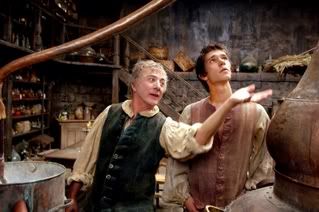



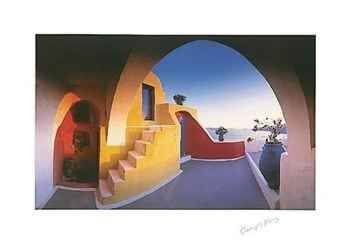
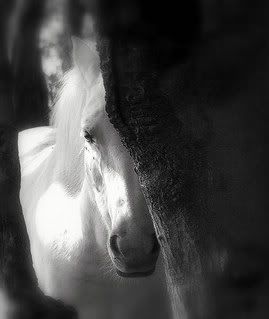

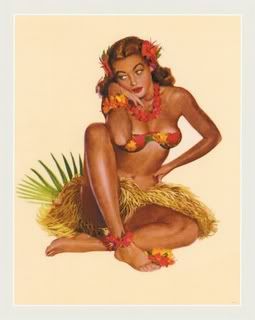
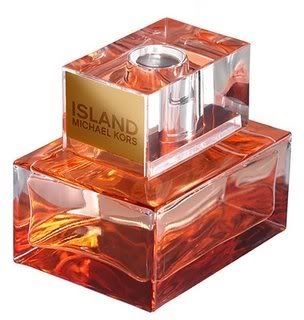
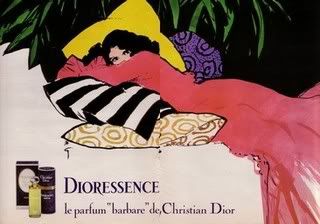
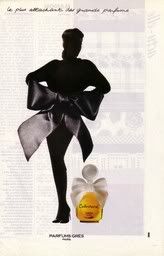

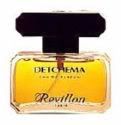
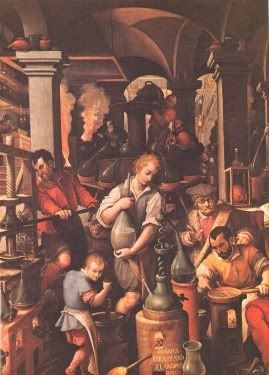
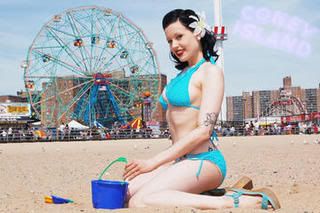
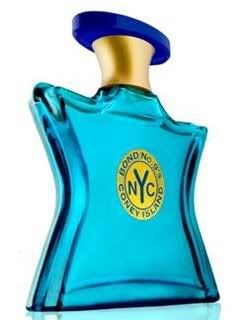



.jpg)